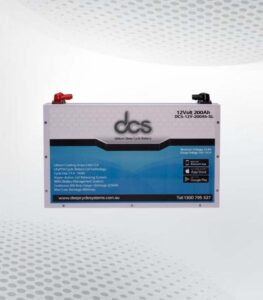Domestic radiant heating systems are becoming an increasingly popular choice for homeowners seeking a blend of comfort, efficiency, and style. These systems work by distributing heat evenly through floors, walls, or ceilings, providing a consistent and gentle warmth that is often more comfortable than traditional forced-air systems. Radiant heating can be powered by various energy sources, including electricity, hot water, or even solar energy, making it a versatile option for different types of homes and climates. The growing interest in sustainable living has also contributed to the popularity of home radiant heating systems, as these systems are known for their energy efficiency and ability to reduce overall heating costs.
The Functionality of Home-Radiant Heating Systems
The functionality of home-radiant heating systems lies in their ability to distribute heat uniformly across a given space. Unlike traditional forced-air systems, which can create uneven temperature zones, radiant heating ensures consistent warmth by using either electric heating cables or water-filled tubes installed beneath floors, within walls, or in ceilings. This method of heat distribution not only enhances comfort but also reduces the circulation of dust and allergens, promoting a healthier indoor environment.
The system can be controlled through thermostats or smart home technology, allowing homeowners to set precise temperatures in different areas of the house. The versatility in energy sources—electricity, hot water, or even geothermal—further adds to its functionality, making it suitable for various climates and types of homes. With advancements in technology, these systems can be customised to fit the unique needs of each household, offering an effective and efficient heating solution.
Associated With Radiant Heating System Costs
The costs associated with radiant heating systems can vary significantly depending on several factors. The type of system chosen—whether electric or hydronic—plays a major role in determining the overall expense. Electric systems tend to be less costly to install but can have higher operating costs, particularly in areas with expensive electricity. Hydronic systems, which use hot water circulated through tubes, generally have higher upfront installation costs but are more energy-efficient in the long run.
Additionally, the complexity of the installation can affect costs. Installing a radiant heating system costs in an existing home can be more expensive than incorporating it into new construction due to the additional labour and materials required to retrofit the system. Floor coverings also impact the expense, as certain materials, like ceramic tiles, are more conducive to radiant heat and might be less costly to work with than others, such as hardwood. Professional installation is typically recommended, adding to the overall cost but ensuring the system’s efficiency and longevity.
Key Factors for Radiant Heating Installation
Before delving into the installation process, it’s essential to understand the basics of radiant heating systems. This type of heating provides warmth directly to the floor or panels in the wall or ceiling, offering a comfortable and efficient alternative to traditional heating methods.
Electric vs. Water-Based Systems
One of the first decisions involves choosing between electric or water-based systems. Electric options are generally simpler to install, but they may result in higher electricity bills over time. In contrast, water-based systems are more energy-efficient but come with a more complicated installation process.
Importance of Flooring Material
The type of flooring can significantly affect the system’s performance. Materials such as tile and stone are ideal as they effectively transmit warmth. On the other hand, surfaces like wood or carpet might require specific adjustments to function optimally with radiant heat.
Insulation: Key to Efficiency
To maximise the efficiency of the heating system and minimise heat loss, appropriate insulation is crucial. Properly insulating your home ensures that the warmth generated by the system is retained, making it more effective.
Strategic Layout Planning
The arrangement of heating components is essential for consistent heat delivery. Careful planning is required to ensure that warmth is evenly distributed throughout the space, reducing the likelihood of areas that remain cold.
Professional Guidance
While it might be tempting to undertake the installation yourself, hiring a professional is strongly advised. Experts can guarantee that the system is compliant with building regulations and that it will last for many years.
Overview of HRV Home Ventilation Systems
HRV home-ventilation systems, or heat recovery ventilation systems, play a crucial role in maintaining indoor air quality by exchanging stale indoor air with fresh outdoor air while retaining heat. These systems are designed to be energy-efficient, as they recover heat from the exhaust air and transfer it to the incoming fresh air, reducing the overall energy needed for heating. HRV systems help regulate humidity levels, preventing moisture build-up and mould growth, which can be detrimental to both the building structure and occupants’ health.
Additionally, these systems filter incoming air, removing pollutants and allergens, thus improving the indoor environment. Properly integrated HRV home ventilation system can also enhance the performance of radiant heating systems by ensuring a balanced airflow and maintaining consistent indoor temperatures.
Installation typically involves connecting ductwork to various rooms, ensuring optimal ventilation throughout the home. While initial installation costs can be significant, the long-term benefits in terms of energy savings and improved air quality make HRV systems a valuable addition to any household.
Maintenance Advice for Radiant Heating and HRV Systems
Regular maintenance is essential to ensure the optimal performance and longevity of radiant heating and HRV systems. For radiant heating systems, it is crucial to periodically check for any leaks or damage in the pipes or cables, as well as to monitor the thermostat for accurate temperature control. In the case of hydronic systems, the boiler should be serviced annually to maintain efficiency. For HRV systems, filters should be inspected and cleaned every few months to ensure proper airflow and air quality.
Additionally, the heat exchanger should be checked annually for any build-up of debris. Ductwork associated with HRV systems should be cleaned regularly to prevent blockages and maintain efficient operation. Proper maintenance not only enhances the performance of these systems but also contributes to energy savings and a healthier indoor environment.
Installation of HRV System Costs
The installation costs of an HRV system can vary depending on several factors. The size and layout of the home significantly impact the overall expense, as larger homes require more extensive ductwork and larger units. The complexity of the installation also plays a role; retrofitting an HRV system costs into an existing home is generally more expensive than incorporating it into new construction.
Additionally, the type of HRV unit chosen, whether it is a basic model or a more advanced system with enhanced features, will affect the cost. Labour costs for professional installation should also be considered, as proper setup is crucial for the system’s efficiency and effectiveness. While the initial outlay may be substantial, the long-term benefits of energy savings and improved air quality often justify the investment.
Design Aspects of Radiant Heating Systems
Radiant heating systems offer significant design flexibility due to their unobtrusive nature. Unlike traditional heating methods that require radiators or vents, radiant heating is installed beneath floors, within walls, or in ceilings, allowing for clean, uncluttered spaces. This hidden installation is particularly advantageous in modern and minimalist designs where aesthetics are paramount. The choice of flooring material also impacts the effectiveness of the system; materials like tile and stone are excellent conductors of heat and can enhance the system’s efficiency.
Additionally, radiant heating can be zoned to provide customised comfort in different areas, enabling more personalised interior layouts. Integrating smart home technology allows for seamless control, further enhancing the system’s versatility in various design contexts.
Conclusion
Home radiant heating systems are an effective and stylish solution for maintaining consistent warmth in a home. These systems distribute heat evenly, reducing cold spots and improving indoor air quality by minimising dust circulation. The choice between electric and hydronic systems, as well as the type of flooring, are critical factors in the installation process. HRV systems complement radiant heating by ensuring fresh air circulation while recovering heat, thereby enhancing energy efficiency. Regular maintenance of both systems is essential to ensure long-term performance and reliability. Though the initial installation costs can be high, the benefits of comfort and efficiency often outweigh the expenses.
FAQ’s
What is a home radiant heating systems?
A home radiant heating systems is an energy-efficient way to heat a home by transferring heat directly through floors, walls, or ceilings. It provides consistent warmth and is often considered more comfortable than traditional heating methods.
How does radiant heating work?
Radiant heating systems use pipes or electric cables embedded in the floor or walls. These systems heat surfaces, which then radiate warmth across the room, warming objects and people directly rather than heating the air.
What are the benefits of radiant heating?
Radiant heating offers several advantages, including improved comfort with consistent warmth, better energy efficiency, and reduced dust circulation, making it ideal for allergy sufferers. It also doesn’t take up wall or floor space.
Is radiant heating expensive to install?
While the upfront installation costs can be higher than traditional heating systems, the long-term energy savings can make radiant heating a cost-effective choice. The price varies based on the system type and installation complexity.
Can radiant heating be used with existing floors?
Yes, radiant heating can be retrofitted into existing floors. However, it may be easier and more cost-effective to install in new constructions, especially when building or renovating.




